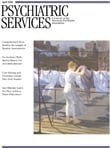AHRQ's Annual Reports on Health Care Quality and Disparities
The Agency for Healthcare Research and Quality (AHRQ) has released the National Healthcare Quality Report 2007 and the National Healthcare Disparities Report 2007. These reports, which are fifth in an annual series, measure trends in effectiveness of care, patient safety, timeliness of care, patient centeredness, and efficiency of care. The reports compile information from numerous sources and present it in the form of graphs and bulleted points.
Data presented in the 136-page National Healthcare Quality Report 2007 indicate that quality is improving at a modest pace, although the rate of improvement appears to be slowing. On the basis of core measures from 1994 to 2005, the average annual rate of improvement is 2.3%, whereas over the past two years the rate has slowed to 1.5%. In the area of mental health and substance abuse treatment, the report highlights three core measures of quality: death rate from suicide, receipt of treatment for illicit drug use, and receipt of treatment for depression.
From 2000 to 2004 the suicide death rate increased for the population as a whole—from 10.4 to 10.9 deaths per 100,000 population—moving farther away from the Healthy People 2010 target of 5.0 suicide deaths per 100,000. On the measure of treatment for illicit drug use, 17.0% of persons age 12 to 44 who met criteria for needing such treatment received it in 2005, a rate that has not changed significantly since 2002. Among children age 12 to 17 the treatment rate for drug use was lower (11.3%). Data in the report indicate much higher treatment rates for depression. In 2005 among adults age 18 to 64 who had a major depressive episode, 65.6% received treatment. Older adults were more likely than adults age 18 to 44 to receive depression treatment (75.5% compared with 58.7%). These rates were similar in 2004.
Data in the 244-page National Healthcare Disparities Report 2007 indicate that there has been little progress in reducing disparities overall since the first report in the series five years ago. For black, Hispanic American, American Indian and Alaska Native, Asian, and poor populations, the number of measures for which disparities are significantly worse or remain unchanged is higher than the number for which disparities are significantly better. The report cites lack of insurance as a major barrier to reducing disparities.
On measures of treatment of illicit drug use, the proportion of persons age 12 and older who needed such treatment and received it at a specialty facility in the past year was significantly higher for black than for white Americans (24.7% compared with 15.6%) and for persons with less than a high school education than for persons with any college education (22.2% compared with 14.1%). The Healthy People 2010 target is for 24% of persons age 12 and older who need such treatment to receive it. In 2005, as in 2004, this goal was met only for black Americans.
The proportion of adults with a major depressive episode who received depression treatment in the past year was significantly lower for black than for white Americans (56.4% compared with 67.2%) and lower for Hispanic Americans than for non-Hispanic whites (50.2% compared with 69.8%). The proportion receiving treatment was also significantly lower for people with less than a high school education than for people with some college education (59.5% compared with 68.0%).
Both reports are available on the AHRQ Web site at www.ahrq.gov/qual/qrdr07.htm.



